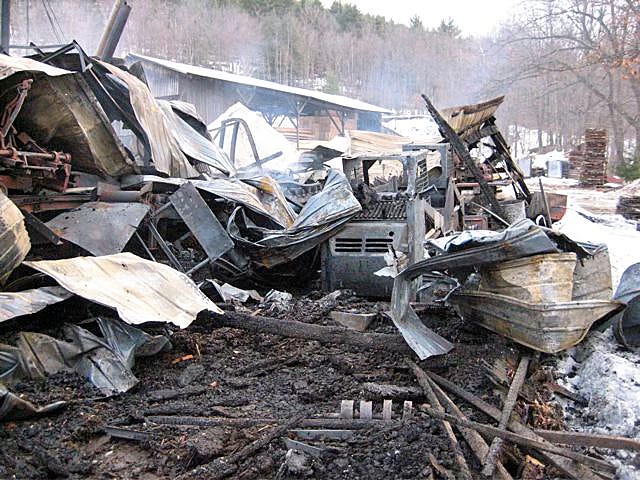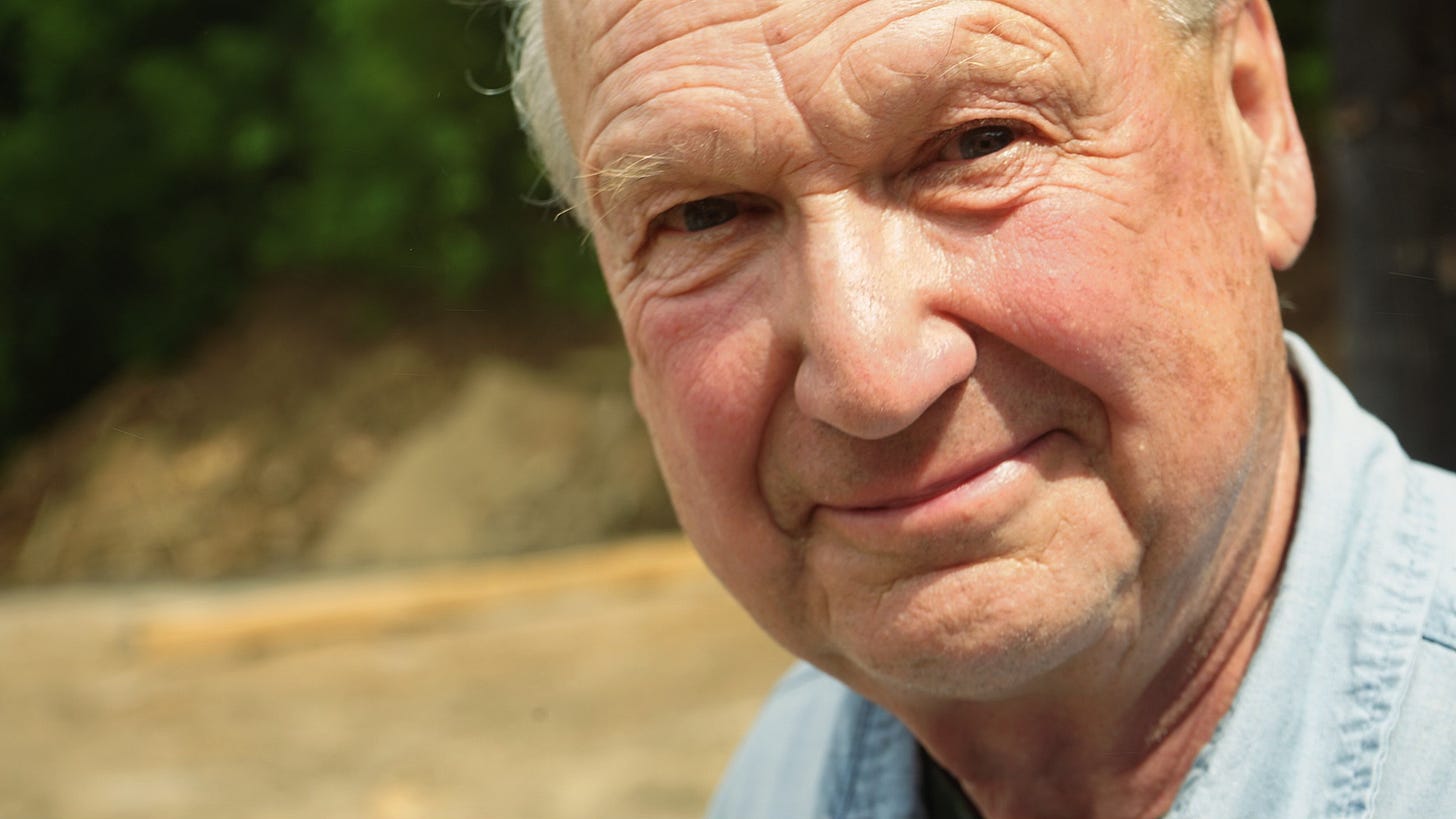My Story: The devastating 2007 fire at Clifford Lumber
In his own voice, Hinesburg resident Lynn Gardner tells the story of what happened after a fire destroyed the main mill on Rte. 116 south of town.
Editor’s Note: This is the first of an ongoing series we call My Story: Audio photo stories of Hinesburg residents. We ask participants to tell a story about a memorable photo — something from their lives or from history — that reveals something about them. The feature is open to all ages and to newcomers and old-timers. The aim is to help us get to know each other better and, sometimes, to learn a little history of our community, to meet our neighbors. If you’d like to tell a story, contact Geoffrey Gevalt at editor@hinesburgrecord.org
This is the story of Lynn Gardner, long-time owner of Clifford Lumber and, for many years, a Hinesburg selectman. His wife, Marie, and son, Peter, figure in this story. Below is the transcript of his telling of the story. (For a short additional story from Lynn about their pet pigs, click here.
My name is Lynn Gardner. I've lived in Hinesburg since 1974. I purchased the lumber company in 1972 for my grandfather, Harold Clifford. He started the business on this site in 1929. The first two years, he ran the sawmill, he rented the land from Reggie Bird because he wasn't sure he was going to stay in the lumber business. and that's how it all started.
December 29th, 2007. We're up at the house, the power goes out. We look out the window, and it's all flames down here. The store across the road, they were having a party, and they saw the fire, and they called the fire department. By the time I got down there, which was really quick, the whole roof on the mill collapsed, all the machinery inside there was just glowing orange, just a complete loss.
I kind of went into a small state of depression. I mean, I just. What I'd been doing, you know, for 30 years maybe, you know, was gone. You know, I just looked at it, almost cried. You know, 60 years old, do you want to spend $1 million and build another facility and start over again? I mean, we had the money, but I just, you know, I just...
It was a period in my life that I didn't know what I wanted to do. And that was the first time that had ever happened, and it hasn't happened since. I've always kept to a straight line and known what I wanted to accomplish and set goals.
Then I said, well, I guess I'm not going to build another sawmill.
We'll do firewood, and we'll buy lumber and resell it and stuff. That was fine. Well, 2007, 2008, we had the financial collapse. Nobody had it any money. People were losing their houses. I mean, it was a pretty scary time.
Luckily, my wife and I had squirrled away a little bit of money, mostly for retirement, and this friend of mine, Lester Burlock, who was a millwright from down in New Hampshire, he called and said, "Lynn, just come down here. There's eight sawmills in a 20-mile stretch that are all bankrupt and for sale. You can buy them for nothing."
So Marie and I went to New Hampshire, looked at different mills, and we bought one near Lebanon, hired a rigger company to take it all apart and move it up here. ... About the 10th of March, it was pretty good weather, we poured cement, and Lester Burlock and his mill crew moved up here. We were sawing lumber the middle of June.
And in retrospect, there's always a silver lining in any event. I was devastated; that sawmill, it was all set up, I just loved it. Everything worked just the way I wanted it to over the years. But it was gone.
So we ended up with a new mill. More modern, computer controlled; it takes a lot less people to run. After we started it, in the middle of June, everything worked, but nothing worked. There's a tuning process. It takes about a year before changing sprockets or moving a deck or just changing, so the lumber all flows really evenly and you get good production.
The fire was the best thing that could have ever happened, because I would have never changed without that nudge. And my son Peter, you know, he points out, you know, that I'm like that. I just get stuck in a rut and I don't like to change much. But here we are.
Three or four years after we built the sawmill, we'd made enough cash, so we built another building and we put our planers in that and set that all up. And Peter is very, very good with the customers and very, very good with making lumber. If somebody comes in with a piece of lumber that's 100 years old, a pattern and needs to have it reproduced, he can do it. We have a profile grinder, we can make knives, we can just do unbelievable stuff.
A long time ago we used to sell lumber to the Randall Box Company, which was over in the Round Barn in Ferrisburg. They made produce boxes, apple boxes and berry boxes and whatever. Well, the Randalls got old, and they sold their box business to a company in Connecticut that made pallets. Larry and Lois, they had all the drawings of all the different sized boxes, and they had their customer lists and all that.
Well, the pallet company ran into a terrible tragedy within three or four months. So the Randalls never got paid for their box business. And Larry Randall at the time was working for me part time, and he said to Peter, "you ought to make boxes, you make the lumber and everything. And we had had all the saws and everything. So we started, he helped us. We went up to Giroux's who made up all the jigs and stuff to make the boxes, and we started making apple boxes, and it's turned into a pretty good sideline. We sell a lot of low grade lumber that you wouldn't sell otherwise because it's just short pieces.
So we sell kiln-dried firewood, boxes, and all kinds of lumber. And here we are today.




Lynn and Peter and their mill are, like Giroux’s and a few other places, the very best evidence of what hard work, honesty and integrity can build and sustain.
Our home is built of hemlock posts, beams and rafters they milled in 2005, joined in part with plates made at Giroux’. They are as straight and beautiful as ever.
Great wood and great people. Thank you, Hinesburg Record, for starting out there. All the best to Lynn and Pete and their families.
Fantastic comeback story and made much better by hearing it told first person.